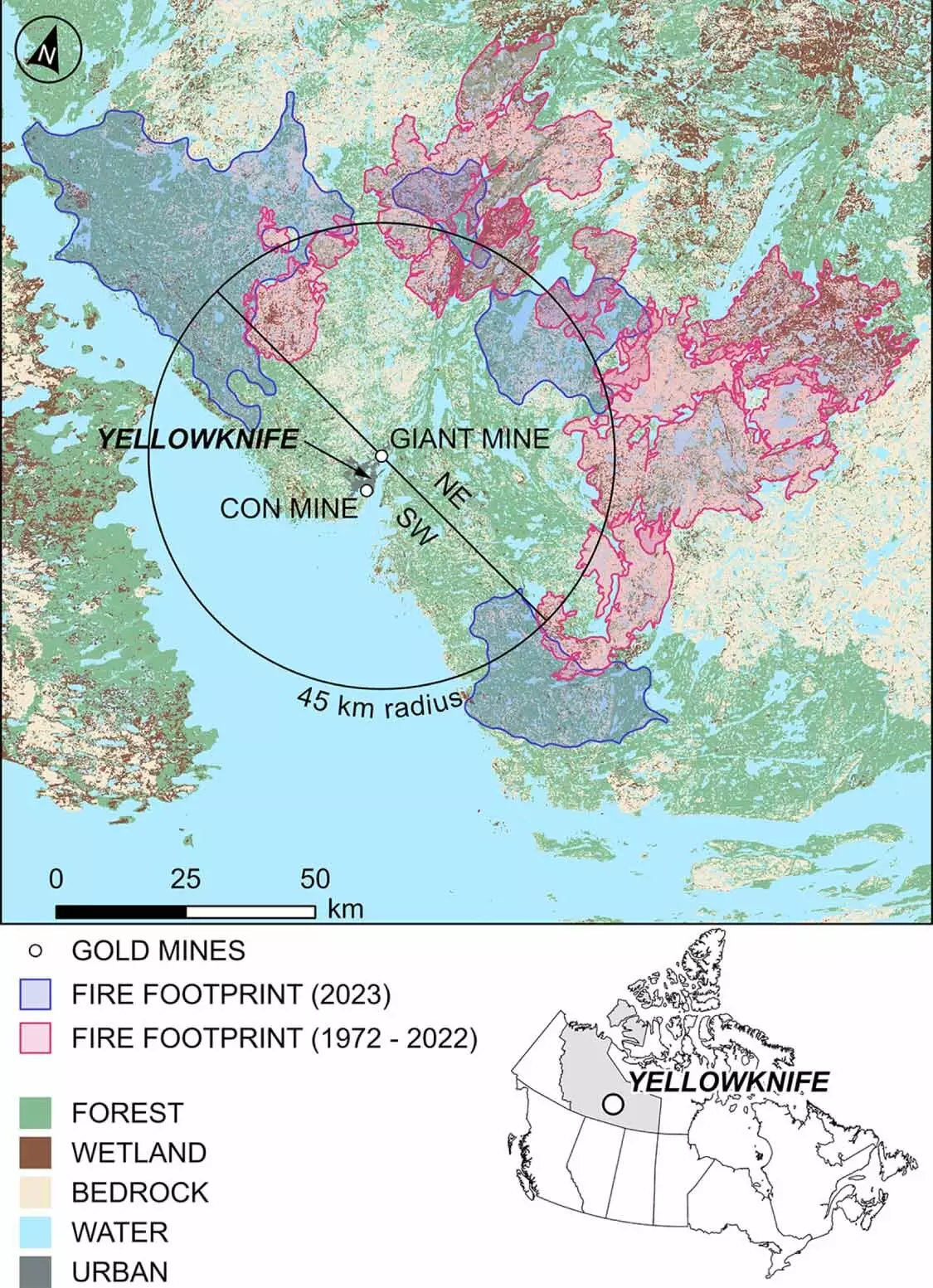The catastrophic wildfire season of 2023 in Canada has raised alarm bells, suggesting that wildfires create more than just immediate physical destruction; they also pose long-lasting environmental threats. Recent research from the University of Waterloo and Nipissing University has spotlighted a concerning connection between wildfires and the release of arsenic — a toxin with grave implications for human health. This research shines a critical light on the intersections between industrial activity and environmental hazards exacerbated by climate change.
The Shocking Findings
In the mine-impacted areas surrounding Yellowknife, Northwest Territories, the study found that four significant wildfires may have released between 69 and 183 tonnes of arsenic into the atmosphere. This amount could represent nearly half of the arsenic emitted globally from wildfires in a given year. Such figures are staggering, especially when considering that arsenic is linked to severe health issues, including various forms of cancer, diabetes, and cardiovascular disease. The transformation of ground-stored arsenic, previously trapped in soils, into airborne toxins during wildfires poses a dire risk, especially in areas with a legacy of industrial mining.
This clear-cut relationship makes one wonder: how many more forested and wetland areas across the world are harboring similar dangers? The study emphasizes that areas previously impacted by mining operations exhibit heightened vulnerability to wildfire effects, igniting a discussion about the need for comprehensive strategies in regions with a history of industrial pollution.
The Role of Climate Change
Climate change is not merely a backdrop for these wildfires; it is, in fact, a catalyst. As temperatures rise and moisture levels fluctuate due to changing climate patterns, the likelihood of intense wildfires increases. Data shows that fire frequency and severity are on the rise, and the researchers’ findings about arsenic release suggest we are only beginning to understand the myriad of public health risks associated with this dynamic. As wildfires become more common, the toxic interactions between fire, soil, and air grow in significance, potentially leading to a cascading series of human health crises.
Dr. Owen Sutton, a postdoctoral fellow involved in the study, notes that Yellowknife is not an isolated case. Similar industrially contaminated regions within Canada, and indeed globally, may face the same existential threats when wildfires churn through their landscapes. This revelation begs the question: are we prepared to confront the shifting realities of wildfires as they become a staple of our summers?
Baldy Thoughts on Fire Management
The solution to the crisis does not lie solely in our understanding of fire behavior but also in our willingness to adopt collaborative and innovative approaches to fire management. Dr. Colin McCarter highlights the importance of integrating various fire management strategies, including Indigenous fire stewardship practices. Such methods are often grounded in a deep understanding of the land and natural fire cycles, providing valuable insights that contemporary science may overlook.
Moreover, the acknowledgment of wetlands as reservoirs of arsenic adds another layer of complexity to fire management concerns. The potential toxicity stored in these areas emphasizes the need for integrated environmental assessments prior to fire events. Local ecosystems must be treated as interconnected systems —approaches to fire management should consider how one ecological element can impact another, especially in regions shaped by human activity.
Future Research Implications
Moving ahead, this groundbreaking research sets the stage for future exploration into the intricate relationships between wildfires and potentially toxic substances that lie beneath our feet. By quantifying the amount of toxins fixed in Northern peatlands and assessing the risk of their release, we may unlock pathways toward developing better fire management policies and practices. It might be an uphill battle, yet understanding the toxicity potential embedded in landscapes impacted by industry is paramount not just for ecological health, but for human health too.
As we forge ahead into increasingly uncertain environmental futures, these findings allow for a deeper contemplation of our intertwined futures. Our industrial actions and climate change do not exist in vacuums; instead, they weave a complex web that we must be vigilant in understanding and managing. We may be standing at the brink of a profound shift in our relationship with nature, and our response could define not only our health but that of the planet as a whole.


Leave a Reply